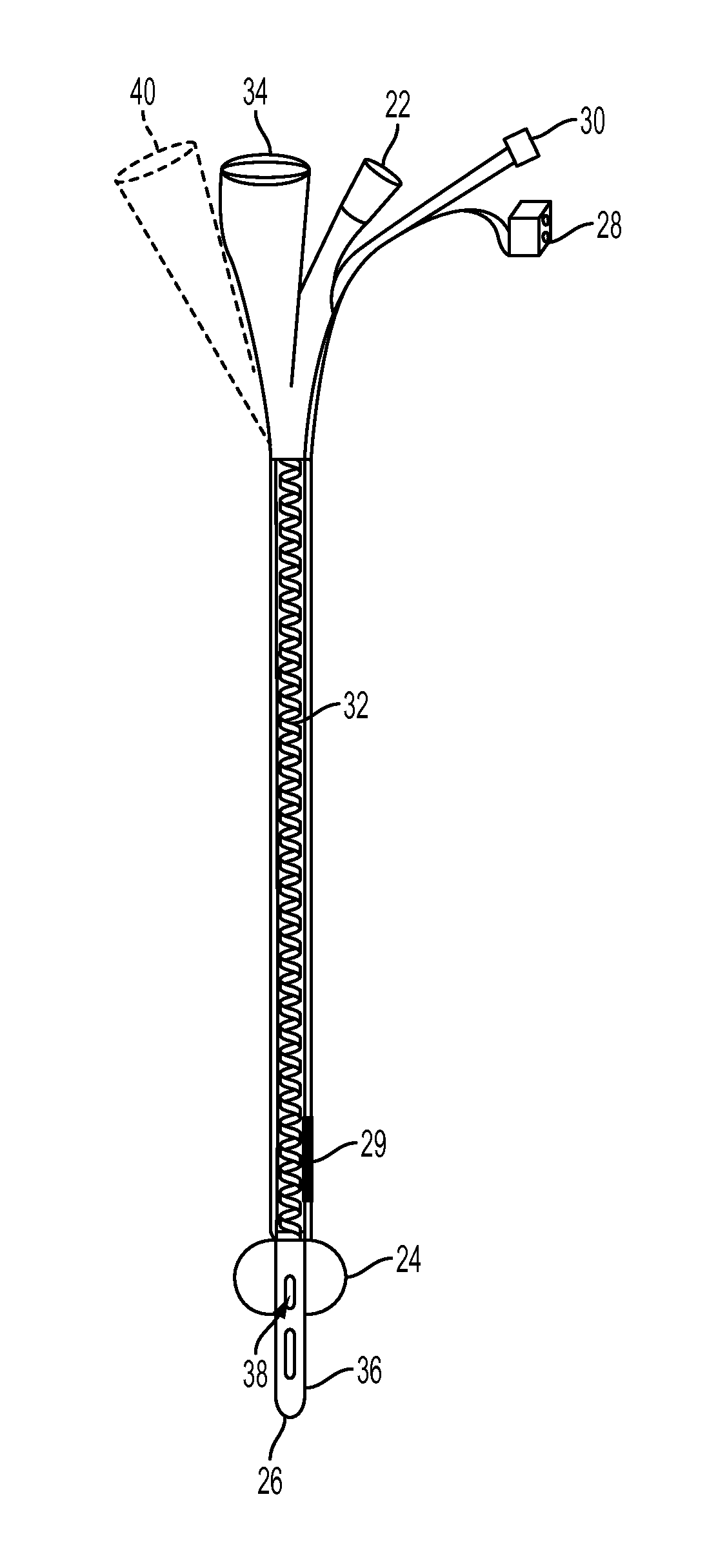Methods and devices for adjunctive local hypothermia
a local hypothermia and local hypothermia technology, applied in the field of methods and devices for local hypothermia, can solve the problems of temperature increase and collateral damage, and rapid local cooling that counteracts collateral damage, and achieves the effect of limiting collateral damag
- Summary
- Abstract
- Description
- Claims
- Application Information
AI Technical Summary
Benefits of technology
Problems solved by technology
Method used
Image
Examples
second embodiment
[0013]the present invention is a more direct cooling of the urethra. It is generally held that intrinsic urinary sphincteric deficiency (ISD) and detrusor over-activity are primarily responsible for post-prostatectomy urinary incontinence. We previously demonstrated statistically significant faster rates of continence recovery with hypothermia. Additional cooling strategies are beneficial to augment our current strategies of inducing local hypothermia. Specifically, bladder cooling may be more directly impacted by intravesical (intracavitary) cooling. Additional direct cooling of the urethral sphincter with a cooled catheter cools from inside the urethral lumen to allow for more effective intraoperative cooling and especially post-operative cooling. Current endorectal cooling can only be performed during the operation and possibly for as much as 6 hours post-operatively because the patient needs to ambulate to minimize the risk of blood clot formation in the legs. Intravesical and d...
third embodiment
[0016]A third embodiment is preemptive local cooling for cautery. The spread of thermal energy to surrounding tissue during monopolar and bipolar cautery causes direct thermal cellular injury and secondary inflammatory damage leading to unintentional ischemia and apoptosis of nearby tissues. Pre-emptive lowering of non-target tissue temperature just prior to activating cautery confers a protective benefit preventing this “collateral damage” to neuromuscular tissues (i.e., cavernous neurovascular bundles). Inflammatory damage can lead to downstream delay of recovery of potency and continence. This “Cooltip” technology is shown diagrammatically in FIG. 3 (FIG. 3A side-view and FIG. 3B end on view) allows for reduction in collateral non-target thermal injury. A burst of compressed cryogen (i.e., tetrafluoroethane gas, carbon dioxide or other cryogen) or super cooled mist is released via directed circular array of micro-nozzles (emitters) 42 milliseconds prior to cauterization effected ...
PUM
 Login to View More
Login to View More Abstract
Description
Claims
Application Information
 Login to View More
Login to View More - R&D Engineer
- R&D Manager
- IP Professional
- Industry Leading Data Capabilities
- Powerful AI technology
- Patent DNA Extraction
Browse by: Latest US Patents, China's latest patents, Technical Efficacy Thesaurus, Application Domain, Technology Topic, Popular Technical Reports.
© 2024 PatSnap. All rights reserved.Legal|Privacy policy|Modern Slavery Act Transparency Statement|Sitemap|About US| Contact US: help@patsnap.com










